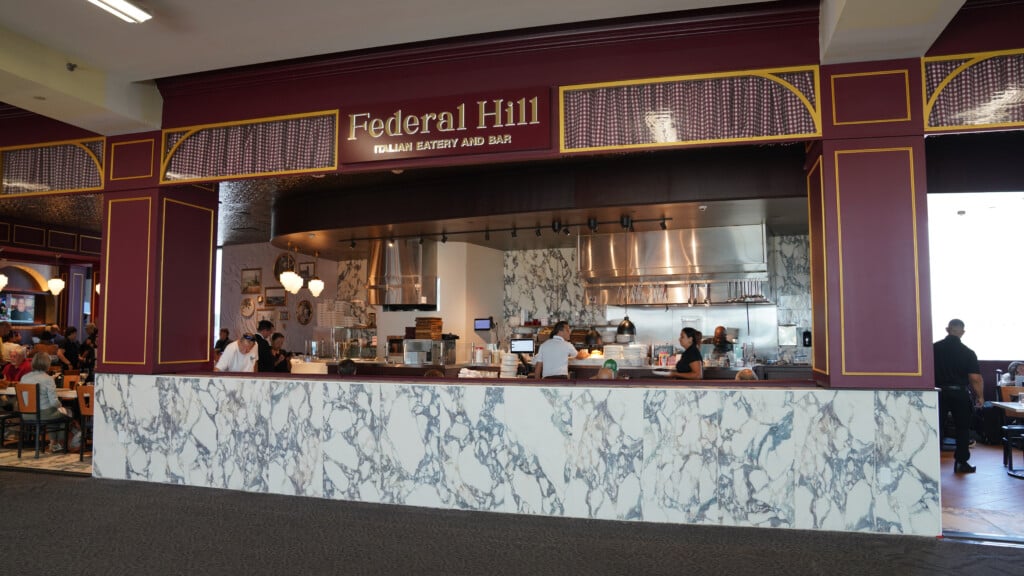Exploring the Grand Trees of Rhode Island
Celebrate spring's arrival in the company of some of the state's most majestic trees.
Tree at my window, window tree,
My sash is lowered
when night comes on;
But let there never be curtain drawn
Between you and me.—Robert Frost
There’s something magical about trees.
We had a slender white birch in my backyard growing up. I’d spend hours back there, pulling off the dried seed pods and rubbing them between my fingertips, watching the paper-thin pieces flit off into the wind. Then there was the big pine down the road where my friends and I gathered under the eaves, a canopy of childhood secrets shrouded from prying adult eyes.
A good portion of the state — at least fifty-five to sixty percent — consists of forest cover, according to the University of Rhode Island. That equals about 776 million cubic feet of living trees; enough to fill 8,747 Olympic-sized swimming pools, according to a 2007 Forest Inventory and Analysis conducted by the U.S. Department of Agriculture.
So chances are pretty good that you have a favorite tree — or several — in the Ocean State, which has so many striking and historical specimens gracing our landscape. So much so that the Rhode Island Tree Council keeps a registry of the so-called “Champion Trees,” the grandest and largest of each species. There are 147 on the list, and all of them are vital to the health and ecology of the state, says John Campanini Jr., the council’s technical advisor who also served as Providence’s city forester from 1976 to 2003.
“Trees are our greatest allies in the fight against climate change,” he says. “They provide shelter, food for wildlife, protect drinking water and stormwater, reduce flooding in urban areas, provide air … there are so many things associated with trees. It’s phenomenal.”
To celebrate the arrival of spring, we chose a handful of trees we think are just spectacular. We hope you do, too. Consider it a starting point to branch out (groan) into your own tree-discovery journey. After all, you never know what you’ll find in your very own backyard.
BLITHEWOLD’S TREES
Blithewold — which means “happy woodland” in Old English — is a stunning mansion and arboretum in Bristol purchased by Augustus and Bessie Van Wickle in 1894. It features more than 2,000 exotic trees and shrubs, including ten Champion Trees. Perhaps its most famous specimen is the giant sequoia said to be the tallest sequoia east of the Mississippi River. The estate’s landscape architect, John DeWolf, propagated the tree during his previous position at Brooklyn’s Prospect Park and sent it to Bristol via train in 1911. It was ten feet tall when he planted it at Blithewold; today it’s a whopping 103 feet with a seventeen-foot-wide trunk. Another notable tree is the Sargent’s weeping hemlock (pictured in the opening image), situated close to the mansion. Planted between 1908 and 1910, the Van Wickle family would play cards under its wide, shady canopy. “It’s an old stately tree that has a lot of significance to both the family that lived here as well as the staff and visitors who have gotten to appreciate it for such a long period of time,” says Dan Christina, Blithewold’s director of horticulture. The tree “has been able to survive for a really long time,” Christina says, while adapting to the region’s warmer winters and more humid, heavier rains. The 120-year-old weeping European beech (above), meanwhile, has been at Blithewold long enough to extend roots underground and sprout several new trees. Beeches, especially ones near the Newport mansions, are having a rough go of things lately thanks to a spreading beech leaf disease. But the Blithewold trees are still healthy and hardy, Christina says, due to a robust treatment plan. “Hopefully we can help make sure that these will keep going for a long time,” he says.
JAMESTOWN’S LIBERTY TREE
Every two years, the Jamestown Historical Society holds Battery Day at the Conanicut Battery Historic Park, a rousing celebration of the earthen fort that Revolutionary forces constructed on the island in 1776 to protect it from British troops. The British took over the site later that year and held sway until French soldiers liberated it in August 1778. To honor the historic relevance of the site — added to the National Register of Historical Places in 1973 — officials planted the Liberty Tree, a weeping beech, in a small clearing just inside the park’s main entrance as part of the town’s bicentennial celebrations in 1976. The next Battery Day will be held this spring, with period reenactors, battle recreations, cannon fire and three flags flown high above the battlements, representing the three countries — the United States, England and France — that have occupied the fort.
WEAVER LIBRARY’S COPPER BEECH
If you’ve ever been to Weaver Library in East Providence, then you’ve seen the glorious copper beech tree on its grounds. There’s no missing it — it’s front and center, a piece of Townie pride from when the parcel was farmland belonging to the Weaver family. It’s so well-known that the library’s logo is a miniature colorized version with books festooned in its canopy. Some experts believe the beech is 300 years old, and it’s greeted librarygoers ever since the “new” building was constructed on Grove Avenue in 1938. But alas, its time is growing short: Arborists say the tree has about three years left, despite efforts to fertilize, care for and trim the dead branches at its crown. “People keep asking us what we’re going to do with it once it’s dead, but we don’t want to think about it not being there,” says Michelle Perry, Weaver’s public services librarian. The library recently held a contest to commission a painting of the tree to serve as an heirloom that will live on long after the beloved beech. The winning painting — done by a local artist and teacher in the East Providence school system — will be revealed at the library on Wednesday, April 24.
BETSEY WILLIAMS SYCAMORE
Arborist Doug Still has a soft spot for the Betsey Williams sycamore, having cared for it during his seventeen years as Providence city forester. “It’s at the top of my list,” says Still, who now owns a tree-consulting company, This Old Tree, and hosts a podcast of the same name. “It’s the most famous tree in Rhode Island.” You’ll find it in Roger Williams Park, where it’s stood for 250 years, right next to the Betsey Williams cottage, where the great-great-great-granddaughter of Roger Williams was born in 1790. Some experts, including Still, think the tree was planted shortly after the house was built in 1773. When Betsey died in 1871, she left the house and 102 acres of farmland to the city, on the condition that it create a park — and a statue inside — dedicated to her famous ancestor. The statue of our state’s founder was dedicated in 1877 — with 20,000 folks attending (!) — and stands between the tree and cottage. A few years ago, park officials brought in Kurato Fujimoto, a master gardener from Japan, to build wooden braces to support a large branch on the sycamore that was dipping perilously close to the ground.
BRANCHING OUT
Head outside and discover your own arboreal favorites this spring.
Blithewold
Bristol’s storied estate and arboretum contains around 2,000 trees and shrubs and opens for the season March 30. Don’t miss Daffodil Days in early April, when 50,000 joyful blooms help usher in the spring season. blithewold.org
Rhode Island Champion Trees
Visit the Rhode Island Tree Council’s website, ritree.org, to see the list (and locations) of the state’s Champion Trees.
Roger Williams Park
Download a map for a self-guided tour of twenty-four of the park’s notable trees. rwpconservancy.org
Swan Point Cemetery
The historic Providence site — the final resting place of famed author H. P. Lovecraft — contains 200 acres of meticulously maintained lawns, gardens and a number of exotic trees, some of which are on the Champion Tree list. Find a map online: swanpointcemetery.com
Wilcox Park
Westerly’s Wilcox Park has an impressive number of gardens and seven Champion Trees. Scan a QR code to take a virtual tour of the grounds. westerlylibrary.org/planting-trees
TUNING IN TO TREES
Former Providence city forester Doug Still believes every tree has a story, and he shares those tales on his podcast, This Old Tree. Now the owner of a tree-consulting business, Still dives deep into local, national and global lore to share the stories of notable trees and the people behind them. Check out episode 1 of the first season to learn about one that’s close to his heart, one he tended to for seventeen years: the Betsey Williams sycamore in Roger Williams Park. Find episodes at thisoldtree.show.



































